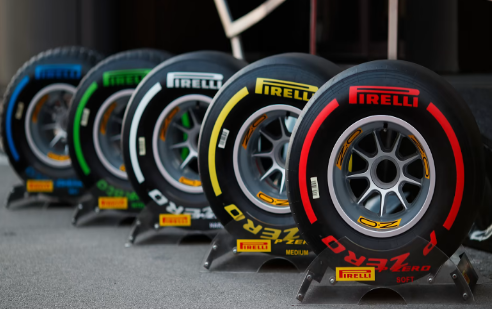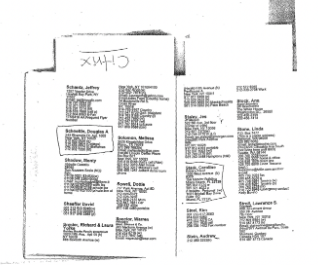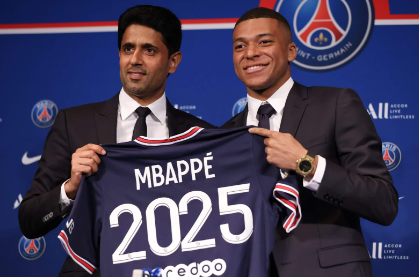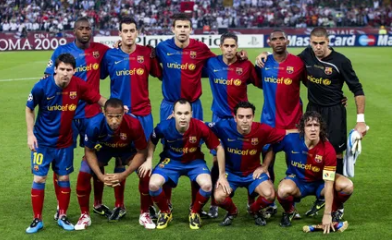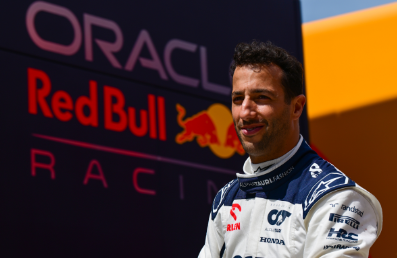Filed under:
Essential to the cars function, a multiple million dollar business, and wildly slept on by fans and analysts alike. Put these three things together and you get the Formula 1 tire. In the past few races we’ve seen a lot of failing strategies which put drivers severely behind at the center of many of these strategies is tires. The track, the weather, how a driver drives, and how many laps they have to go all make up a team's decision on tires and pits. However oftentimes tires come as an afterthought to an already thought out plan. When the time is taken to go through the full story around the most essential shared car part it’s easy to see they are the real heroes on track.
The current tire manufacturer for F1 is Pierelli. The company won the rights to be the exclusive manufacturer in 2011 and has been providing tires and data to teams ever since. Pierelli has an 18 year contract with F1 so we’ll continue to see them for the next seven years at least. The battle between tire manufacturers is often a big one as the rights to the biggest stage in motorsport gives a huge platform and revenue boost. This pressure doesn’t come for free, the companies must maintain a high level of service to teams and the governing bodies.
Recently Pirelli tires have been showing some less than desirable features. In Qatar the internal temperature of the tires was rising to dangerous levels leading to the FIA to mandate a stop every 18 laps: to Pirellis credit they did notify the FIA immediately once an issue was discovered. Issues with heat were also present in Austin where what many thought should be a one stop race quickly had to become a multi stop race due to track temperatures and a bumpy track degrading the tires. In Mexico City there was an issue with the surface of the tires degrading creating “Marbles” which are small balls of rubber all over the track. While all of these instances were caused more by track than tire they still bring up some questions around tire endurance and integrity but they also give context to how teams should be using these tires.
Tire strategy in F1 this season has been somewhat lacking. As mentioned early a lot of teams have been attempting to squish the tires into pre-existing strategies. In Austin we saw this with teams committing to a one stop that just wouldn’t work. To ensure the best race outcome on a one stop strat teams should start on a medium and when those tires are burned and done they will switch to hard for the rest of the race. The hards not only last the longest but also give a strategic advantage as after a few laps they will have “warmed” up allowing speed and endurance.
On paper this strategy is great but it relies on a track temperature and track conditions that are tire friendly, Austin wasn’t tire friendly. In an interview with ESPN Max Verstappen talked about the rough and bumpy conditions on the track, this combined with the heat made these tires degrade a lot faster. Teams didn’t account for this on race day leading to drivers like Daniel Riccardo and Charles Leclerc suffering because of this miscalculation.
Teams didn’t seem to take much notice of the massive flaw to one stop races as many thought about trying it again in Mexico. Before the race announcers were speculating that the choice by almost all to go on mediums and hards meant we were getting ready for a one stop race. While this was a unique call on their part considering Mexico is a track known to be slick and hot, thankfully many teams did learn from Austin and were comfortably able to do two stops, something strongly aided by the red flag.
The best and ideal two stop race depends largely on position and car, for a top car in a good position a strategy could look like softs or mediums at the beginning to keep position or fight for a higher one. Neither of these tires last particularly long so the goal in the first stint is to create a gap to the person behind allowing wiggle room for a pit stop. After the first pit a hard tire can give potentially needed longevity to the car the first pit stop can and often is used to under take allowing drivers to gain positions. While hard are great for longevity if the track or driving conditions are harsher and a second pit is needed depending on tire allocation and laps remaining a medium is almost always the way to go. The mediums allow for that last burst of fight which can make or break a race and as we saw in Mexico can lose quite a while and still be faster than the hard. This is only one way to go with a two stop adding an extra stop adds endless possibilities so how is it teams choose.
One of the ways teams pick the tires they want to use is by looking at the data they’ve collected in free practice. This data is extremely valuable as it shows how the individual drivers run in different scenarios. While this always has been and always will be a large part of F1 having teams branch out beyond just data could be helpful when it comes to tires.
Lando Norris had an awful qualifying in Mexico not even making it out of Q1 this performance came from a variety of factors but racing goes on he started the race on softs a choice seen from no one else on the grid. On paper the strategy makes sense, softs are by far the fastest and it can be reasonably assumed many teams will have to have a two stop race. The softs allows him to get positions back and make sure he isn’t isolated by a huge time gap later on. The issue is the way Norris drives degrades his tires faster and doesn’t lend itself very well to a slicker track. His driving style wasn’t taken into account and he struggled severely during the first stint of the race.
By looking at a combination of data about the track, how the car performs, and by looking at a driver's strengths and weaknesses it becomes easier to find a tire that actually fits the strategy. While there have been some stand out tire moments, like with Lewis Hamilton in the Dutch GP, this season, especially lately we’ve seen tire strategies that feel sloppy and like they were made in a split second. There’s a lot of disparity between big and smaller teams but tires are one of the few things everyone gets the same. While there’s hundreds of aspects going into race strategy, it’s time to look at the unsung hero before it becomes the overlooked problem.
